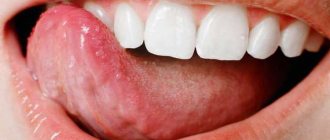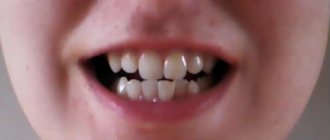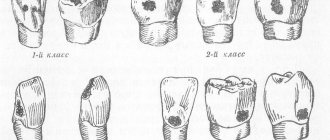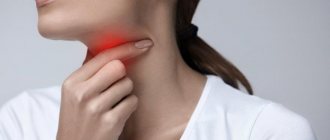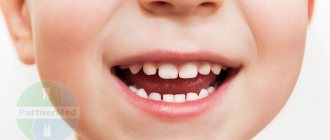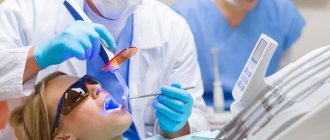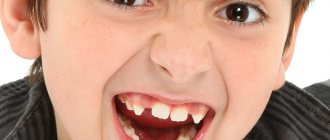Many people suffer from incorrect and aesthetically unattractive position of teeth in the mouth. There are cases called prognathia and retrognathia, which are different from protrusion and retrusion. In this option, the position of all the teeth is correct, but the row itself grows inward or protrudes outward.
But cases with a small number of isolated units or a small cluster are already a pathology. If the teeth protrude and move forward, the patient suffers from protrusion. When the opposite situation is visible, and part of the row falls inward, the teeth are called retrusive.
Protrusion of teeth is
This anomaly is difficult to miss, even for a person without medical education.
Protrusion means protrusion. In medical science, this word refers to conditions in which certain anatomical parts protrude beyond their natural position. For example, this is a protrusion of an intervertebral disc or a protrusion of teeth. In the latter case, the front teeth are tilted too forward. They seem to stick out from the jaw. Dental protrusion is not only a cosmetic problem (although the aesthetic component is quite significant), but also a general medical one. In this case, the teeth are susceptible to injury, they quickly wear out and become damaged. Therefore, tooth protrusion requires adequate treatment. In most cases, this is the domain of orthodontics. Special orthodontic products (in particular, braces) will help correct the abnormal position of teeth. In some cases, it is necessary to resort to surgical correction.
Signs of protrusion
The following signs are characteristic of protrusion of anterior teeth:
- the front teeth appear too large because they are tilted forward;
- the teeth are fanned out to the sides, causing large gaps to form between them;
- too tight or parted lips;
- speech defects (lisp, spattering of saliva).
Possible complications
Open vertical occlusion is not without consequences. The aesthetics of the face and smile suffer, difficulties arise in other functional departments:
- due to problems with biting and chewing, digestion is disrupted;
- the person stutters, with a large gap, speech is unclear;
- The TMJ (temporomandibular joint) is in trouble, muscle tone decreases;
- periodontal condition worsens (excessive tension occurs);
- The abrasion of the tooth enamel, on which all the work “falls”, increases; they are more loaded and subject to more pressure;
- oral breathing causes problems with the ENT organs and respiratory system.
Causes
The causes of this anomaly differ depending on the age at which it appeared. If tooth protrusion has already developed in the primary occlusion, then the reasons may be:
- hereditary factors;
- intrauterine development disorders;
- early introduction of complementary foods (excessive load on the jaws);
- bad childhood habits (thumb sucking, excessive use of pacifiers).
If a defect is formed in a mixed bite, then the following reasons are considered:
- crowding of teeth due to excessively large front incisors (noted with underdevelopment of the upper jaw);
- bad habits;
- tongue size is too large;
- mouth breathing;
- late loss of baby teeth.
In permanent dentition (in adults), tooth protrusion usually occurs against the background of periodontal disease. The following factors contribute to this:
- pathological receding gums;
- exposure of the neck of the tooth;
- loosening of teeth (due to which they can take a different position).
General description of the disease and its pathogenesis
Protrusion is a consequence of the presence of pre-existing degenerative processes developing in the spinal column. With this pathology, the fibrous ring located inside the intervertebral disc is seriously damaged. It does not yet have signs of disruption in the shell with bulging into the external space, as happens with a hernia, but is quite stretched and deformed, which is recorded in osteochondrosis. Such an anomaly of the thoracic spinal column is its complication.
A disorder develops due to a lack of fluid and mineral components required to restore the spinal disc. The fibrous ring begins to deplete, and gradually the problem affects its second layer - the nucleus pulposus. When the lack of collagen fibers and organic components in fibrous tissues reaches a dangerous level, the formation of microcracks begins, the core and outer elastic membrane become thin, swollen, and slight bulging is noted.
Intervertebral disc deformation
Gradually, a large amount of lactic acid accumulates in the tissues, which can ultimately lead to the formation of a hernia. At the same time, the damaged area becomes less mobile, due to the decreased intervertebral disc, the bones rub against each other, and severe pain is noted.
Attention! If a protrusion of the thoracic region in any area has already manifested itself as severe pain, the patient is close to being diagnosed with an intervertebral hernia. In this case, restoration of bone and joint tissue is carried out immediately and only with the assistance of a traumatologist and neurologist.
With protrusion, pain can spread throughout the spinal column
Types of protrusion
A protrusive bite can form on one of the jaws, or on both jaws at once (bimaxillary protrusion). Let's consider the features of such options.
Bimaxillary protrusion
In this case, the abnormal position of the teeth is noted on the upper and lower jaws. This is a fairly rare variant of the pathology. In the vast majority of cases, people with this anomaly are unable to fully close their lips.
Upper jaw
In this case, only protrusion of the upper incisors is observed. This variant of the anomaly is characterized by shortening of the upper lip and underdevelopment of the facial muscles. Due to anatomical features, such patients often have a slightly open mouth.
Lower jaw
Protrusion of the lower jaw, as a rule, develops due to bad habits or congenital underdevelopment of the lower jaw. For this reason, teeth lack space and protrude forward.
Symptoms
Timely detection of abnormal inclination of incisors ensures faster and more effective correction of the problem.
Since this pathology can be observed both with permanent and during mixed dentition, it is worth paying attention to the following symptoms inherent in protrusion:
- Excessive forward protrusion and outward turning of the lips . This symptom may not be very noticeable externally in people with full lips, while with sufficiently thin lips this pathology will lead to a violation of the aesthetic appearance of the face.
- Inability to close lips completely . A situation in which, in a relaxed position, the gap between the lips reaches 4 mm is considered pathological.
The severity of these symptoms depends on the severity of the pathology. Signs can be either not too noticeable or reduce the aesthetic appearance of a person.
Diagnosis of the disease
Diagnosis of such a defect is not considered difficult. A doctor can make a diagnosis only by external examination of the oral cavity. In addition, the specialist will pay attention to indirect signs, such as mouth breathing or chronic diseases of the respiratory tract.
If tooth protrusion is suspected, the patient is subject to the following types of examinations:
- dental examination;
- patient interview;
- radiography;
- additional research methods (at the discretion of the doctor).
Consequences
If jaw protrusion remains untreated, this is fraught with the development of the following complications:
- increased risk of decay in front teeth (which are tilted forward);
- uneven chewing load on the jaws and teeth;
- change in face shape – cosmetic defects;
- deterioration of the jaw joints;
- the presence of large interdental spaces (three and diastemas), which contributes to infectious and inflammatory pathologies of the oral cavity.
To avoid such consequences, doctors recommend going to the clinic as early as possible and undergoing treatment.
Treatment of the anomaly
The treatment tactics for this pathology depend both on the severity of the anomaly and on the age of the patient. In most cases, treatment is resorted to only after the bite has been changed. For young children, treatment is recommended only for very serious defects in primary teeth.
In the initial stages, incisor protrusion is treated with aligners (removable aligners) or orthodontic plates (often prescribed to children). More severe cases of protrusion require the use of bracket systems with closing loops.
The duration of wearing braces depends on the age and severity of the pathology. For some patients it is 6-8 months, for others it is 1.5-2 years. After braces there is a retention period. It is important to consolidate the result obtained. This is done with the help of retainers - removable mouthguards that will not allow the teeth to return to their previous position.
Important! In cases where the lower teeth overlap the upper teeth by more than 2/3 (deep bite), then treatment is carried out in several stages. First, the patient's bite is corrected, after which the protrusion of the front teeth is corrected.
In severe cases, when orthodontic treatment methods fail, a decision is made to undergo surgery. Such interventions are performed by specialists in orthognathic surgery.
What to do if your teeth protrude forward
If the incisors move out of their normal position and begin to protrude, this becomes noticeable immediately. Already at the initial stage of the formation of malocclusion, parents should show the child to the doctor. Only an orthodontist will help solve the problem and correct malocclusions in the early stages of their formation. If you look at a person before and after treatment, doubts about the need for correction disappear.
Correction of retrusion and protrusion is performed using two methods. The appropriate method is selected individually after the severity of the malocclusion has been assessed.
Subject to space availability
If one tooth protrudes forward or leans back, it will be easier to solve the problem and correct the defect. When there is free space between the incisors, canines and premolars, it is used to move the elements of the jaw. This state is a more favorable prospect.
If the deformation is minor, the patient is recommended to be treated with braces or fixed-type orthodontic structures. It is advisable to begin therapy after the eruption of permanent chewing teeth. However, sometimes bite correction is performed earlier.
If there is no space
If the patient has crowding and there is no free space in the jaw, then correcting the bite will be more difficult and time-consuming. In this case, you first need to remove one or more elements. Most often, the choice falls on premolars or wisdom teeth (if any). After this, orthodontic bite correction is performed. With braces, the fangs are shifted to the area where the previous tooth was located. At the same time, the pressure force straightens the incisors and returns them to the anatomically correct position.
Important!
After removing the orthodontic system, it is necessary to wear trainers or aligners. They consolidate the results obtained. Without this, the bite may return to its original position or the teeth may move apart into an unexpected position.
If, in a calm state, the lips diverge due to the gums by more than 1 cm, surgical intervention is prescribed. It will be difficult to correct your bite using an orthodontic appliance. The patient can wear braces for a long time, but they will not bring noticeable improvements. Therefore, it is advisable to evaluate the prospects of the chosen technique even before the start of bite correction.
Causes of retrusion
The reasons for retruded dentition are almost the same as for protrusion, namely:
- heredity;
- features of intrauterine development of the fetus (in particular, violation of the formation of tooth germs);
- high crowding of teeth;
- late loss of baby teeth;
- bad habits in early childhood (thumb sucking, excessive use of pacifiers);
- violation of jaw development.
What is an open bite
This type of malocclusion is characterized by the absence of closure of the teeth with the central bite in the vertical direction, that is, relative to the horizontal plane.
There may be an open bite not only in the front, but also in the area of the lateral teeth, unilateral, bilateral, but very rarely. This anomaly, like many others, can be observed at different age periods, namely in milk, mixed and permanent dentition. Open bite can be either an independent form, with a neutral relationship of the sixth teeth (population frequency, according to various authors, 1.3-5.7%), or in combination with other anomalies (sagittal or transverse). According to V.N. Trezubov and R.A. Fadeev, the open bite is thicker (62.12%) in combination with the mesial relationship of the dentition.
Prevention of retrusion
Retrusion changes can be treated well with modern orthodontic methods. However, the most effective option is timely prevention. To prevent such a scenario from developing, experts recommend adhering to the following rules:
- Eliminating bad habits in early childhood . Make sure your child does not suck his thumb or use pacifiers. If you feed your baby from a bottle, the neck should not be too wide. Otherwise, there is a danger of developing an abnormal bite.
- Nasal breathing . Wean your child from the habit of mouth breathing. Sometimes this is due to chronic respiratory diseases (for example, chronic sinusitis). In this case, timely treatment of such pathologies is necessary.
- Treatment of dental diseases . Regular examinations by a dentist and timely treatment of diseases of the teeth and gums minimize the likelihood of pathological tooth alignment.
Prevention of thoracic protrusion
To avoid the transition of osteochondrosis to the stage of protrusion and its further complications, it is necessary to adhere to a number of recommendations:
- conduct at least two courses of therapeutic massage per year for 10-15 procedures;
- carefully monitor your posture, preventing it from worsening;
- Work with a specialist to develop a suitable set of exercises to maintain the strength of the muscle corset;
- monitor your diet and prevent weight gain;
- saturate your diet with foods with plenty of protein and calcium;
- take vitamin complexes with minerals;
- avoid injury to the spine.
Treatment of protrusion and retrusion at the CIS clinic
At the Center of Israeli Dentistry on the Left Bank of Kyiv, tooth retrusion and protrusion are treated with modern orthodontic methods. A team of CIS professionals uses high-tech products in their practice to correct bite and dentition. These are devices from the world's leading manufacturers, characterized by high quality and operational reliability.
For each patient (child or adult), CIS doctors select a separate treatment regimen, which becomes clear after the examination.
Calculation of diagnostic jaw models
To accurately diagnose dental anomalies, jaw models (casts) are used. This method allows you to copy the shape of the jaws with millimeter precision. Based on the width of the incisors, information is determined about the proper width of the dental arch, which is necessary to create space for all teeth. An orthodontist uses measuring instruments to determine the length and width of the dentition, the degree of displacement of the teeth and their sizes. In all these procedures, the experience of the doctor performing them and carrying out further calculations is important. Any measurement error will lead to unsatisfactory treatment results that will be difficult to correct.
FAQ
What happens if tooth protrusion and retrusion are not treated?
This is fraught with the development of a number of disorders, primarily of a psychological nature, but not only. Such complications include:
- violation of diction;
- crowded teeth;
- increased likelihood of infectious and inflammatory diseases of the oral cavity;
- wear of teeth, accelerated destruction due to uneven load during chewing;
- disruption of the digestive tract (due to chewing disorders);
- deterioration in appearance and psychological problems.
How long does the treatment last?
It all depends on the severity of the disorder and the age of the patient. If the correction is carried out in childhood or adolescence, the treatment is faster and more effective. This is due to the ongoing period of formation of the dental system. In adults, correction processes are slower. But this is by no means a reason to refuse treatment for adults. Treatment with braces lasts from 6 months to 2 years.
What is the cost of treatment?
The price depends on the scope of treatment and the complexity of a particular case. The exact price is discussed with the doctor at the diagnostic stage.
Additional therapies
Physiotherapy
The main treatment for this disorder. Improves the condition of the muscle corset several times, stimulates the production of nutrients and increases the degree of their absorption. After therapeutic exercises, there is a decrease in pain, restoration of limb mobility, elimination of swelling and stopping further tissue destruction in the intervertebral space. The rules for performing and types of exercises for protrusion and other disorders of the thoracic spine can be found in the video.
Video - Exercises for the treatment of hernias and protrusions of the thoracic spine
Massage
It is better to carry out the procedures under the supervision of a specialist who can choose the optimal pace of massage and identify the most sore spots. Massage accelerates the blood, stimulates the absorption of nutrients, and eliminates numbness. Thanks to regular sessions, the severity of pain is completely eliminated or significantly reduced. Treatment involves at least 10 sessions with a doctor.
Acupuncture
This procedure refers to conventional acupuncture. Sessions are carried out under the direct supervision of a doctor, as it is important to place needles on certain points with nerve endings. After treatment, patients note a significant analgesic effect, stiffness and swelling in the affected area go away a little. For protrusions, 5-10 procedures are prescribed.
Acupuncture is one of the methods of treating thoracic protrusion
Shock wave therapy
When carrying out such treatment, the rehabilitator immediately sees the result obtained from the influence of the device and, if necessary, can change the strength and speed of propagation of the wave. When using the shock wave method, it is possible to suppress compression of the nerve roots, stop further destruction of the intervertebral disc, increase the strength of the muscle corset, and eliminate stoop. Additionally, recovery in case of injury is accelerated and bones are strengthened. The exact number of sessions is determined by the attending physician.
Laser therapy
It is used when it is necessary to normalize metabolic processes, increase the production of collagen and proteins in the tissues of the fibrous ring. At the same time, there is an analgesic effect and the inflammatory process is eliminated. Can only be used in combination therapy.
Magnetotherapy
Normalizes the functioning of not only the musculoskeletal system, but also all body systems. After sessions using magnets, blood and metabolic nutrition in the diseased area improves. Additionally, it has a healing, analgesic and anti-inflammatory effect.
Stages of destruction and deformation of the fibrous ring from normal to hernia
Attention! If there is a protrusion of the thoracic region, surgical intervention is not performed. Operations are prescribed only if the pathology passes into the hernia stage and only if seriously necessary.
Additionally, the method of treating thoracic protrusion can be found in the video.
